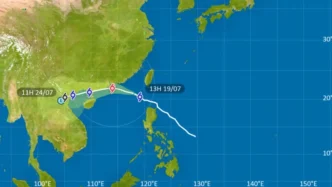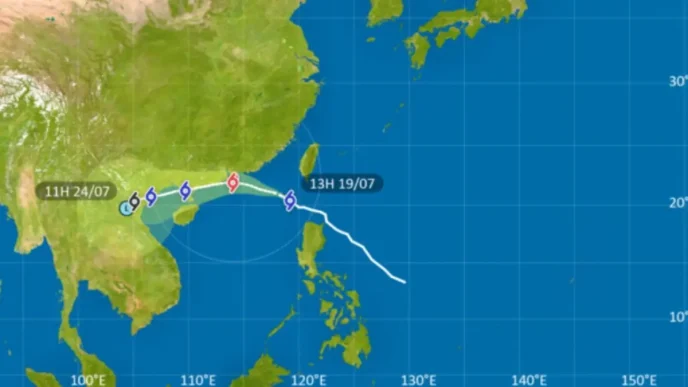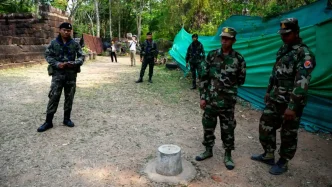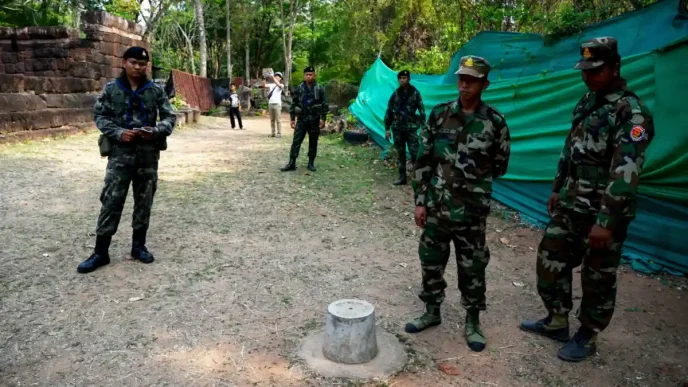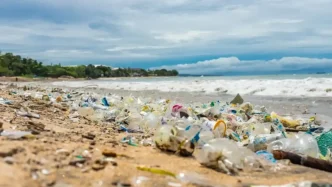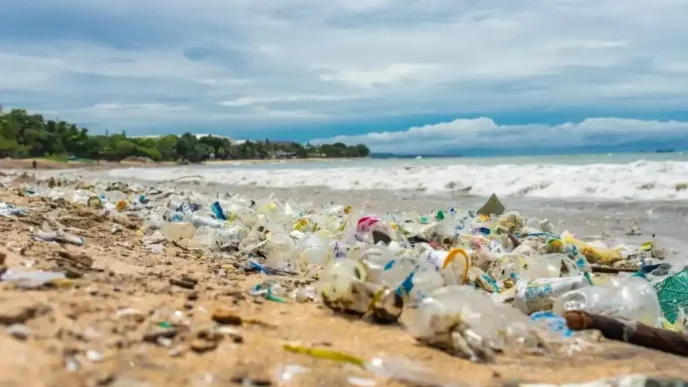Thailand has long been a sanctuary for those fleeing conflict and persecution in neighbouring countries, earning a reputation as a regional haven for refugees. Yet, beneath this commendation lies a complex and often contradictory approach to asylum. From the recent pushback of Cambodian refugees to the looming threat of forced repatriation for Vietnamese Montagnard and Uyghur individuals, Thailand’s policies reveal a nation grappling with its role as both protector and gatekeeper. Nowhere is this tension more evident than in its handling of refugees from Myanmar, including the beleaguered Rohingya population, whose plight continues to test the country’s humanitarian commitments.
A Legacy of Asylum Under Strain
Thailand’s history of providing refuge is notable. Over decades, it has sheltered hundreds of thousands fleeing wars, coups, and systemic oppression across South East Asia. Along its western border, nine camps house over 80,000 individuals from Myanmar who have sought safety for up to 40 years. Many belong to ethnic groups like the Karen and Shan, displaced by protracted conflict. A newer wave arrived after the 2021 military coup in Myanmar, with around 50,000 initially finding temporary shelter on Thai soil, though most have since been returned under military supervision.
Further back, some half a million stateless individuals—many residing in Thailand for over 50 years—stand to benefit from a progressive cabinet decision in October 2024. This policy offers pathways to permanent residency or even Thai nationality, addressing a chronic issue of statelessness that has left generations in limbo. For those in border camps, temporary asylum remains the norm, with access to basic services like birth registration, primary education, and healthcare. Yet, restrictions persist: education is limited to the Myanmar language, higher education is inaccessible, and legal work outside camps is prohibited, despite informal arrangements being an open secret.
These contradictions highlight a broader question: can Thailand maintain its status as a country of asylum, or will it slide towards transnational repression, aligning with neighbouring regimes to push back those in need? The answer lies in how it navigates the diverse needs of five distinct refugee groups from Myanmar, each presenting unique challenges to policy and principle.
The Oldest Residents: A Step Towards Inclusion
Among the longest-staying refugees are those who arrived over half a century ago, often fleeing early waves of conflict in Myanmar. The 2024 cabinet decision marks a significant shift for this group, offering a chance at permanent residency or citizenship based on specific criteria. This move could resolve the statelessness of many, granting them legal recognition and rights long denied. While implementation details remain unclear, the policy signals a willingness to integrate those who have built lives in Thailand over generations. If successful, it could set a precedent for other groups, though bureaucratic hurdles and political will remain critical obstacles.
Long-Term Camp Residents: Temporary Asylum, Permanent Limbo
The second group, numbering over 80,000, resides in border camps established decades ago. They benefit from a policy of no pushback—a cornerstone of Thailand’s temporary asylum practice—but their lives are tightly constrained. Education in Myanmar’s language limits integration, and while basic needs are met, opportunities for advancement are scarce. Work outside camps, though common through unofficial channels, carries risks of exploitation due to its illegality.
Until recently, hopes of repatriation to Myanmar or resettlement in third countries like the United States sustained this group. However, Myanmar’s ongoing instability and tightened immigration policies in potential host nations have dashed these prospects. A more humane approach, as advocated by experts, would involve allowing Thai-language education, access to higher learning, and legal work opportunities. For children born in Thailand, discussions around permanent residency or nationality could offer a future beyond the camps. Without such reforms, their temporary status risks becoming a permanent state of exclusion.
Post-Coup Arrivals: A Precarious Shelter
The 2021 coup in Myanmar triggered a fresh influx of around 50,000 refugees into Thailand, initially housed in Temporary Safety Areas. Under the supervision of the Thai army, most have since been returned to Myanmar, raising concerns about their safety. With armed conflict persisting across the border, new arrivals are inevitable. Humanitarian advocates argue for a policy of no pushback, temporary asylum, and access to basic services. Any repatriation must prioritise safety and dignity, ideally in consultation with the United Nations High Commissioner for Refugees (UNHCR).
Equally important is ensuring transparency. Independent humanitarian actors should have access to assess conditions, while Thai villagers affected by these influxes deserve support to prevent local tensions. Dialogue with military authorities overseeing these areas is crucial to balance security concerns with humanitarian obligations. Without such engagement, the risk of forced returns under unsafe conditions looms large.
The Rohingya: Detained and Desperate
Perhaps the most vulnerable are the hundreds of Rohingya refugees, a Muslim minority from Myanmar’s Rakhine State, who have faced well-documented persecution. Many arriving in Thailand are held in immigration detention, despite a Memorandum of Understanding intended to move children and mothers to welfare shelters. Fathers and adolescent males often remain detained, and some face charges of illegal immigration, even minors under 18.
This punitive approach stands in stark contrast to the temporary asylum offered to other groups. A more compassionate policy would mirror that extended to long-term camp residents: no pushback, temporary asylum outside detention, and access to basic needs. Resettlement options, particularly in Gulf countries with cultural and religious ties to the Rohingya, such as Saudi Arabia, could be explored. Additionally, Thailand’s national screening mechanism for urban refugees, adopted six years ago, offers a potential pathway to “protected person” status, enabling legal work and longer stays for those who qualify. Until such measures are implemented, the Rohingya remain trapped in a cycle of detention and despair.
New Arrivals and Forced Conscription: A Modern Challenge
Since 2024, a fifth group has emerged, fleeing forced conscription in Myanmar. These newcomers require urgent protection, including registration with the UNHCR as “Persons of Concern” to secure temporary safety. Detention and prosecution under immigration laws must be avoided, particularly in light of Thailand’s new anti-torture policy, which prohibits pushbacks to dangerous situations. While third-country resettlement remains a distant possibility, the immediate priority is ensuring their safety within Thailand’s borders. A failure to adapt policy to this emerging crisis risks undermining recent humanitarian gains.
A Call for Enlightened Leadership
Thailand’s refugee policy stands at a crossroads. On one hand, progressive steps like the 2024 cabinet decision on statelessness and commitments to temporary asylum reflect a legacy of compassion. On the other, pushbacks, detentions, and military-led repatriations signal a troubling alignment with transnational repression—a practice where states collude to return refugees to harm. The treatment of Cambodian, Vietnamese Montagnard, and Uyghur refugees underscores this risk, casting a shadow over Thailand’s regional reputation.
Experts, including academics and UN rapporteurs, urge a more enlightened approach. Policies must prioritise no pushback, access to basic rights, and transparent engagement with international bodies like the UNHCR. For the Rohingya and newer arrivals, alternatives to detention and pathways to protection are essential. For long-term residents, integration through education, work, and legal status offers a sustainable solution. Above all, Thailand must resist pressures to align with neighbouring regimes seeking to silence dissent through forced returns.
Balancing Act in a Region of Conflict
As South East Asia remains a hotspot of conflict and displacement, Thailand’s role as a refuge is both a burden and an opportunity. Its proximity to Myanmar, a nation fractured by war and oppression, ensures that refugee flows will persist. Balancing national security with humanitarian duties is no easy task, yet it is one Thailand cannot afford to mishandle. If reforms reduce barriers to education and work, as some propose, they may ease local tensions and foster integration—though such outcomes remain unconfirmed without broader policy shifts.
For now, the image of Thai Navy and park officials offering food to stranded Rohingya on Koh Dong island in June 2022, as captured in photographs released by the Royal Thai Navy, serves as a poignant reminder of Thailand’s potential for compassion. Whether that potential translates into consistent policy will define whether it remains a beacon of asylum or succumbs to the darker currents of repression. The stakes, for the thousands seeking safety on its soil, could not be higher.





